An in-depth analysis of a 15k race | Seven Hills Run
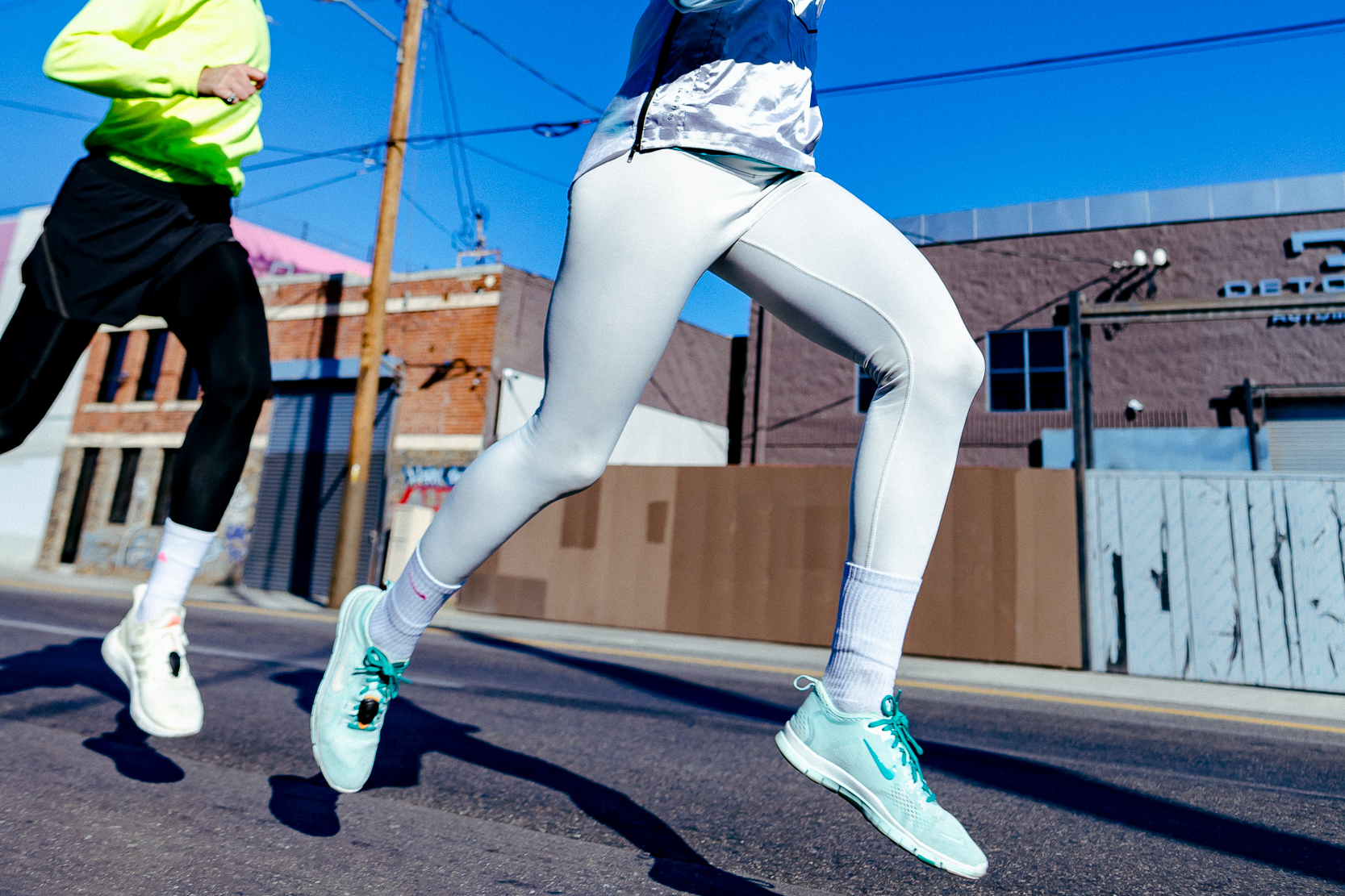
The Seven Hills Run is an annual 15 km road running race held in Nijmegen, the Netherlands (https://en.wikipedia.org/wiki/Zevenheuvelenloop). It has grown into one of the largest road races in the Netherlands with 40,000 participants. In the 2010 edition, Leonard Komon improved the official 15 Km World Record in Nijmegen to 41:13.
Both authors of The Secret of Running (www.thesecretofrunning.com) participated and ran the race wearing a Stryd foot pod. In this paper, we will analyze the Stryd-data of author Hans van Dijk. He completed the race in 59:34, some 17 minutes behind winner Joshua Cheptegei (Uganda, 42:08). In his age class (M60), Hans finished 2nd out of 819 participants.
Garmin data
We will first look at the running dynamics of the race from Hans’ Garmin Forerunner 630 watch. They are presented in the table below.
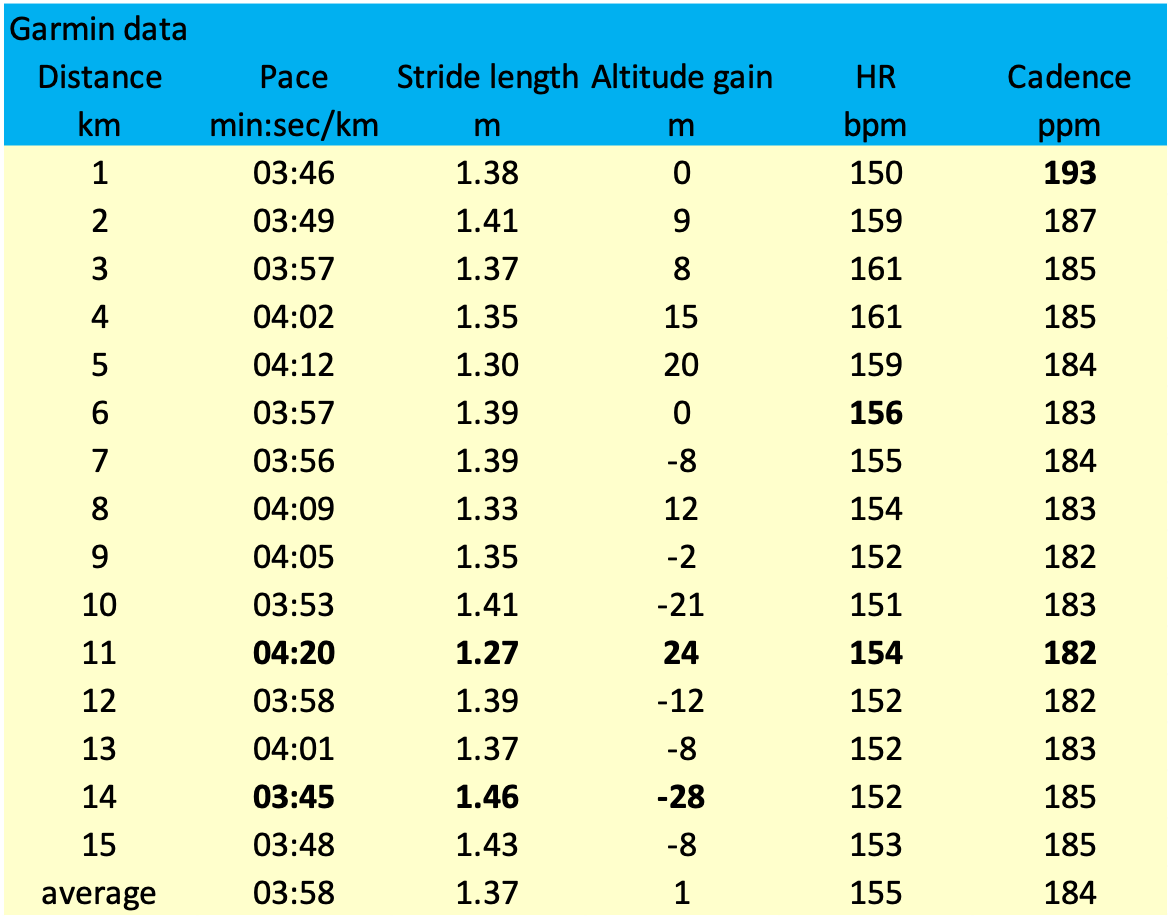
Impact of altitude differences
The race conditions are clearly reflected in the above table. During km’s 4, 5, 8 and 11 the race is uphill, which results in reduced pace and stride length. During km’s 10, 12, 13 and 15 the race is downhill, so Hans was able to increase pace and stride length. We have prepared the figures below to illustrate the impact of the altitude differences on pace and stride length. Obviously, the correlation is not perfect as other factors, such as heart rate, wind and fatigue also have an impact.
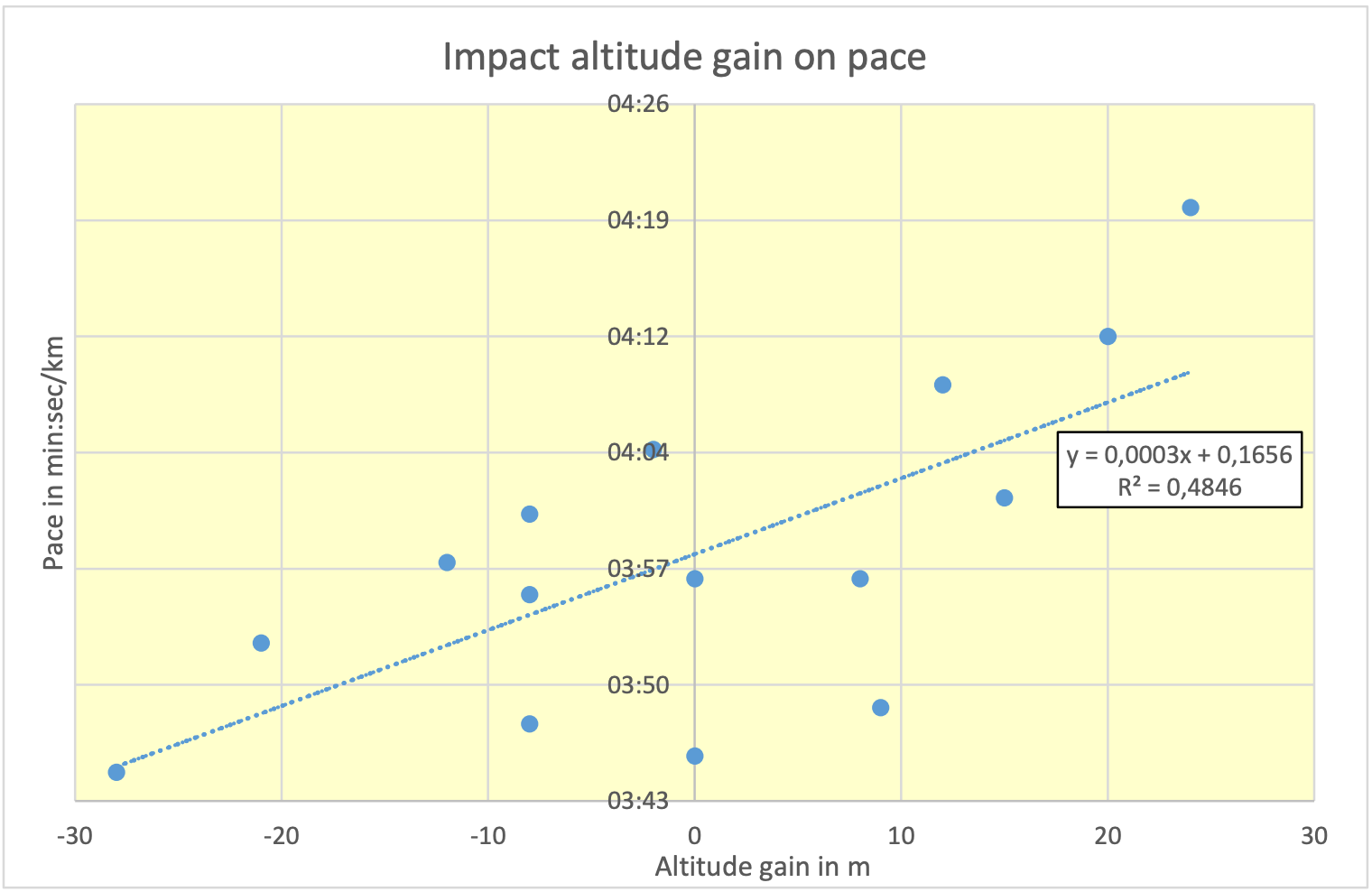
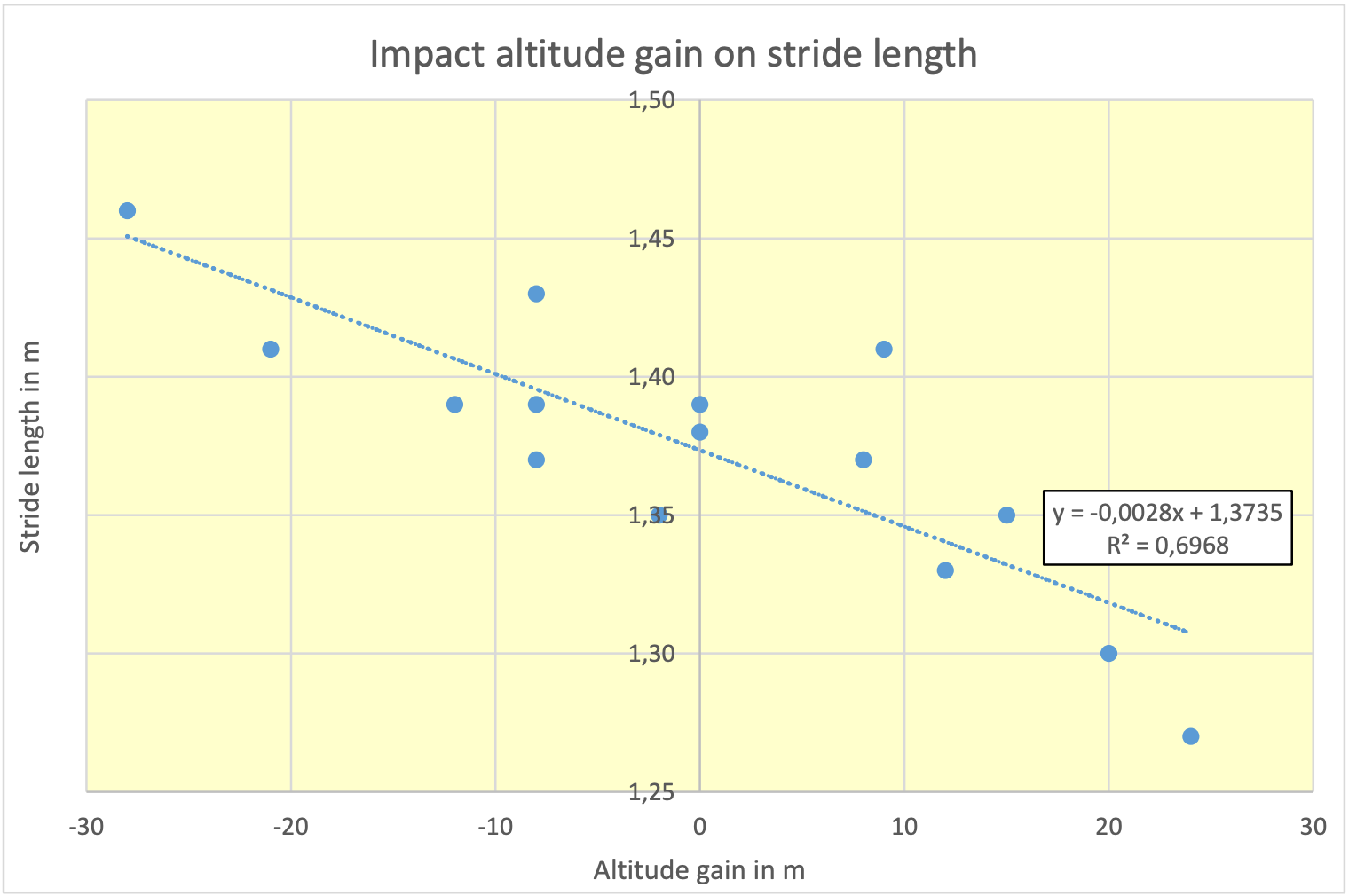
Impact of heart rate
The heart rate data in the table are also quite revealing. In the first 5 km’s Hans was still fresh and motivated, leading to HR’s around 160 bpm. From km 6 onwards, Hans decided to take it a little easier which is reflected in lower HR’s, down to 152. At km 11, Hans decided to increase his effort again as he wanted to follow the pace of fellow M60-runner Thomas van Zoelen. Consequently, his HR increased somewhat and then stabilized as Thomas and Hans decided to finish jointly without a sprint finish. Obviously, in hilly races the HR cannot be used to control pace, which is shown in the figure below. The relationship between HR and pace is very weak, which is caused by the impact of the altitude differences during the race.
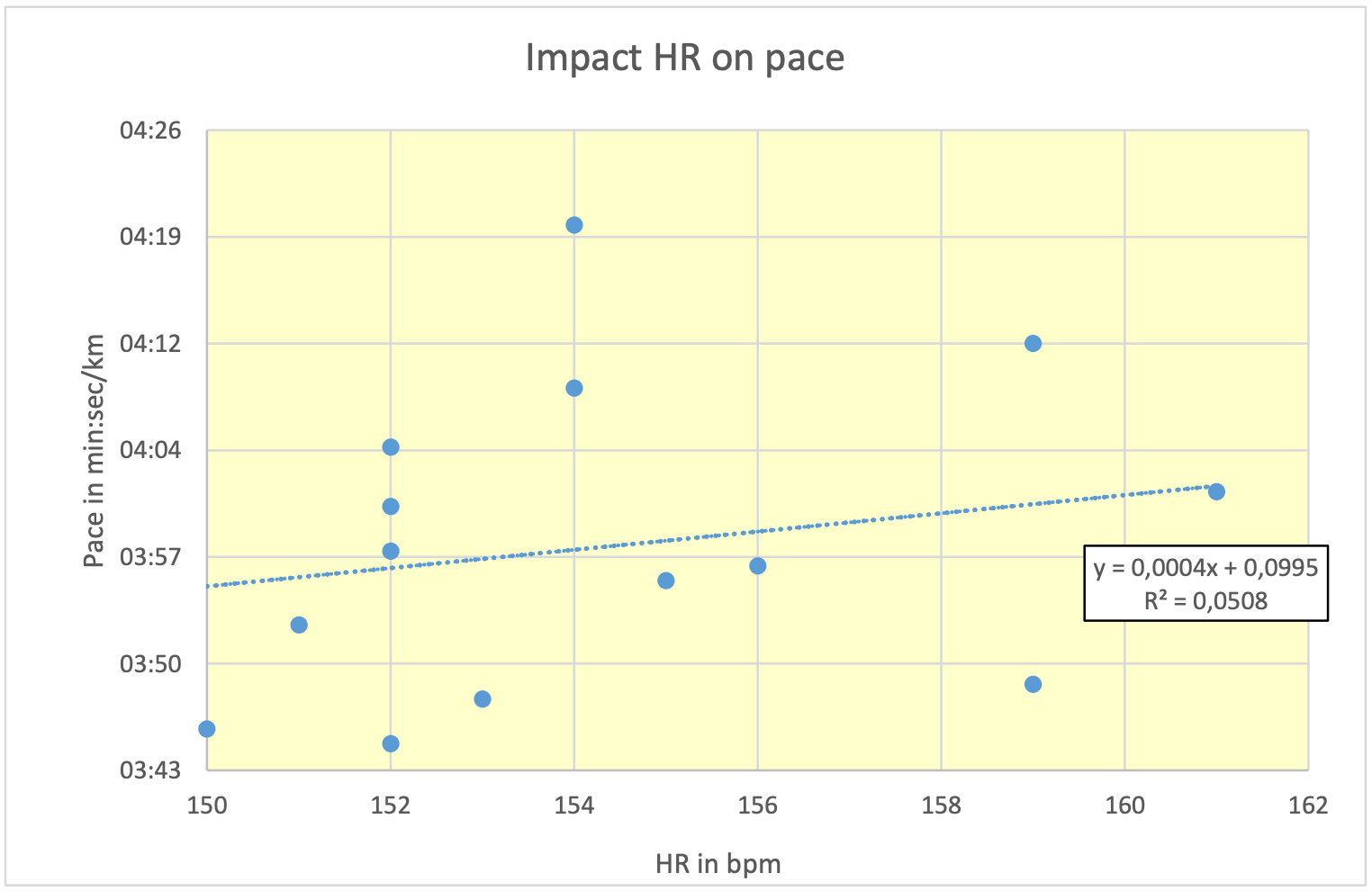
Stryd data
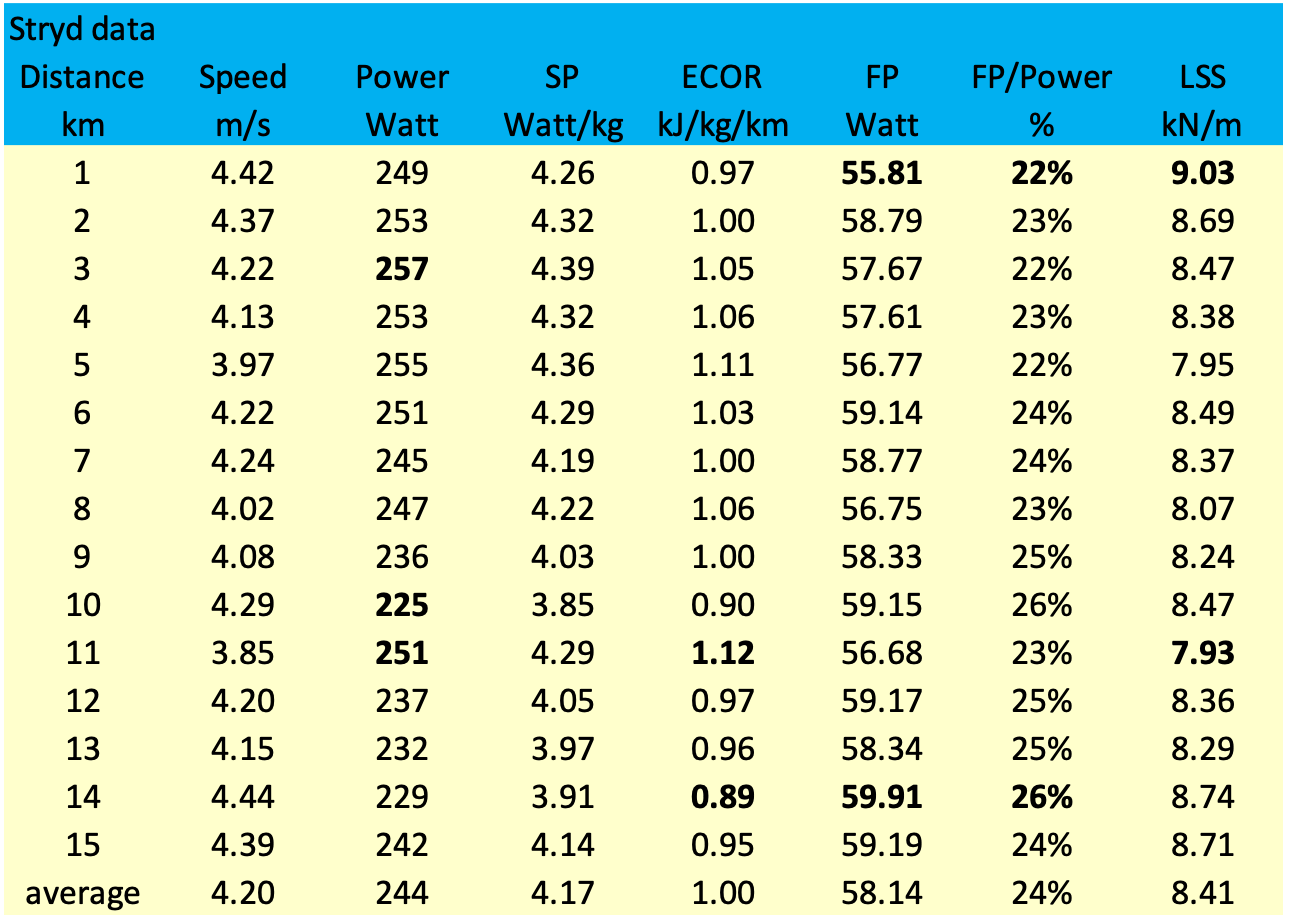
Impact of altitude differences
Obviously, this table also reflects the race conditions. We should be aware that in a flat race, more power will lead to a higher speed, but uphill part of the power is needed to overcome the altitude difference. One of the main advantages of the Stryd is that the impact of altitude on power is calculated exactly, in accordance with the laws of physics. We can see this by looking at the energy cost of running (ECOR, in kJ/kg/km), which is defined as the specific power (in Watt/kg) divided by the speed (in m/s). The table shows that the average ECOR during the race was 1.00 kJ/kg/km, which is quite close to the theoretical number (0.98 kJ/kg/km) that we derived in our book. It is also quite clear that the numbers are higher uphill and lower downhill, reflecting the energy cost of the altitude difference. The figure below shows that the (direct) relationship between altitude differences and ECOR is much stronger than the (indirect)relationships with pace and stride length that we saw earlier.
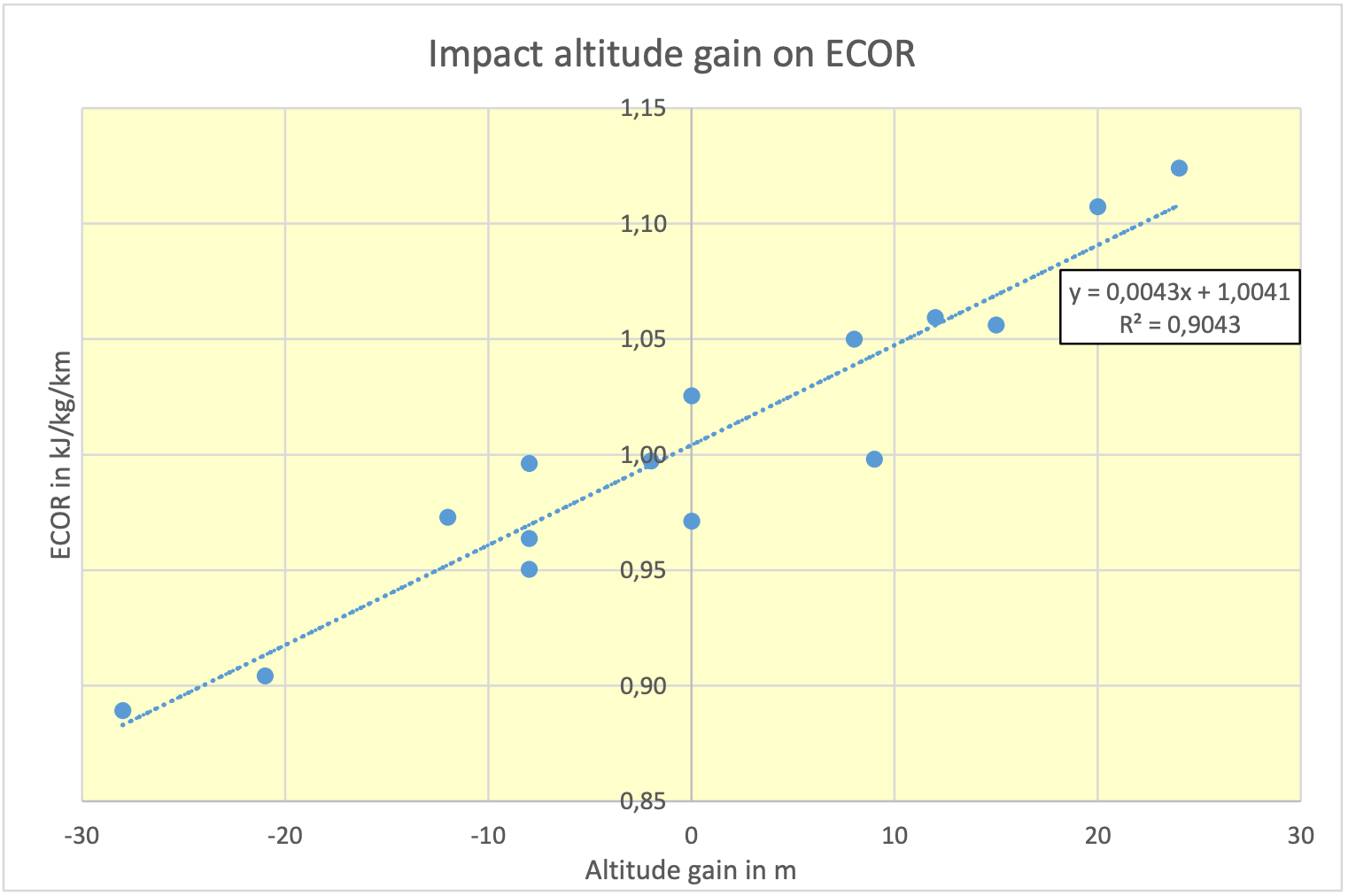
Impact of heart rate
Another advantage of the Stryd is the fact that the power data represent the real effort of the ‘human engine’ of the runner. Obviously, the goal should be to run with constant power throughout the race. As we saw, earlier Hans did not manage this as he took it easier from km 6 onwards. His reduced motivation from this point led to both a reduced heart rate and a reduced power output. The relation between both is shown in the figure below. It is quite clear that next year Hans should strive for an even power output of around 255 Watt and an even HR of around 160 bpm. From experience Hans knows that these goals are realistic (his anaerobic threshold is around 157 bpm), provided he is eager and motivated to dig deep.
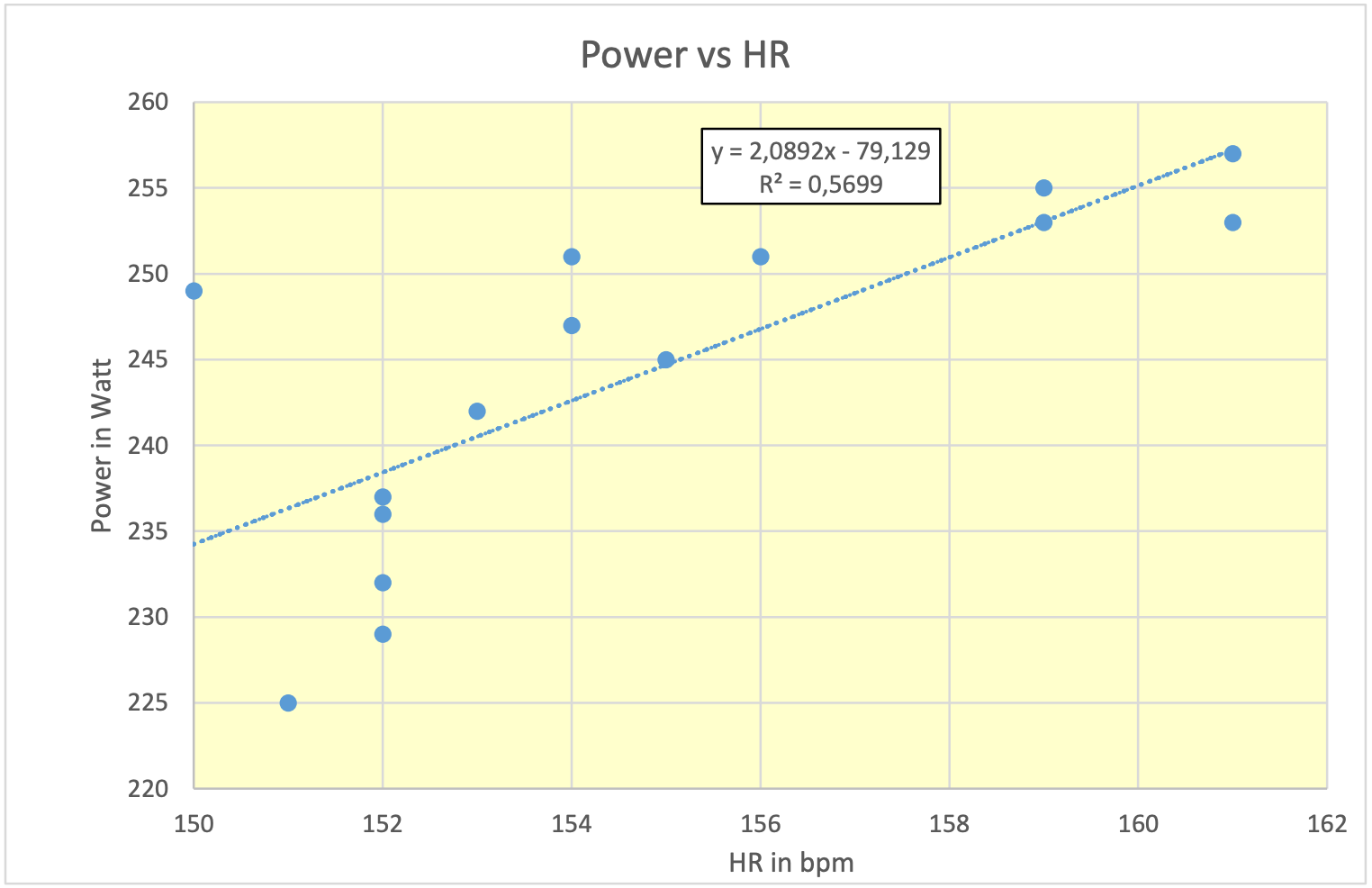
Impact of wind, Form Power and Leg Strength Stiffness
The race was run in quite stormy weather. The wind force was around 6 (Beaufort Scale) , the runners faced head wind during the first 5 km and enjoyed a (more or less) tail wind from km 7 onwards. A head wind will lead to a (somewhat) lower pace at the same power output, as detailed in our book. The impact of the wind is one the factors contributing to the scatter in the data.
According to Stryd, Form Power is a measure of the cost of maintaining a runner’s individual form. A lower Form Power means more power is used for running forward, which is favorable. The data from the table seem to show that Hans’ FP slightly increased during the race, probably as a result of fatigue.
According to Stryd, Leg Strength Stiffness is another metric of running efficiency. A higher LSS is thought to be favorable. The data from the table seem to show that Hans’ LSS reduced slightly during the race, also probably as a result of fatigue.
Conclusions and outlook
The data seem to reflect the conditions of the race very well. The tables and graphs show promising and convincing relationships of the impact of:
1. Altitude differences (which is best reflected by the ECOR)
2. Heart rate (which is influenced by the motivation of runner and determines power output)
3. Fatigue (which is related to FP and LSS)
Unfortunately, Hans did not manage to dig deep and maintain a constant power output during the race, which is a very important prerequisite for optimum performance.
The data of this one race do not allow conclusions on the most promising aspect of running power meters, i.e. how to optimize a runner’s style and form to reduce the ECOR. As explained in our book, this requires long term training and evaluation of the impact of all the running form variables. The authors are currently trying to improve both their insight into these variable and reducing their ECOR in practice.
Obviously, it is early days yet with the application of running power meters. In practice, these potential advantages still have to be proven further. Also, perhaps other advantages will materialize in the coming years. We hope that many other runners will join us in this quest to optimize our running!
If you would like to purchase The Secret of Running (or the German version, Das Geheimnis des Laufens), you can do so at the bottom of store.stryd.com.

